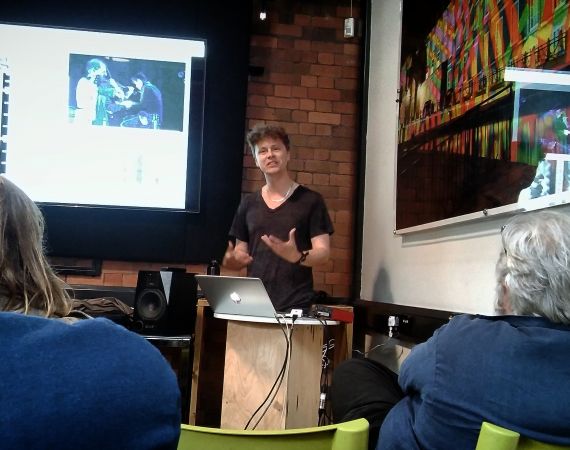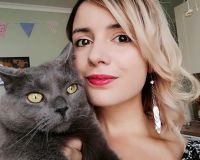Lunchtime talk write-up
Posted on Mon 26 Jun 2017
Ambient Presence
Producer and musician Jay Auborn joined us to discuss and demonstrate the processes used to create the album 'Race to Zero'; a collaboration with musician John Matthias that sets out to create a unique and fractured sense of sonic place. Jay spoke to us about the techniques used to realise the…

Posted by
Speaker
Jay Auborn
Producer and musician Jay Auborn joined us to discuss and demonstrate the processes used to create the album 'Race to Zero'; a collaboration with musician John Matthias that sets out to create a unique and fractured sense of sonic place.
Jay spoke to us about the techniques used to realise the conceptual idea. Binaural recording, reverberation drones, capturing echoes, acoustic improvisation, and digital error all form part of the albums sound. “Cerebral yet accessible” 8/10 Uncut / “Just beautiful” Mary Anne Hobbs BBC 6 Music.
Five Things I Learned
1. Jay studied Fine Art at university before learning composition, shaping his understanding of music; Jay loves the process of exploring themes and questions using music. Race to Zero came out a few weeks ago, and explores how music works in different spaces and the relationship between music and space. Jay co-created the album with John Matthias, a skilled violinist who has worked with Radiohead among other big names.
2. Jay’s first collaboration with John Matthias was on Geisterfahrer meaning wrong-way driving in German after John had sent his work to Jay be mixed. Jay was struck by the beautiful acoustics and sense of space in John’s work and wanted to work with John to use space as the forefront of the music. They returned to St Lawrence chapel where John had recorded his music and recorded their tracks in a classical way; if they wanted to create more space they would move their instruments away from the microphones instead of using digital reverb plug ins.
3. During the talk Jay invited us to don a pair of headphones and listen to one of the tracks from Race to Zero. It was really possible to feel the different textures of the sounds such as the crisp cymbal hits, bassy drums, shrill violins, all inhabiting and flowing through the space. Jay and John improvised each of the instruments, recording them in different acoustically rich environments that distort the sound in exciting ways. After they had done the recording they would then play around with the tracks, sometimes re-pitching them before mixing all the elements together.
4. Jay gave us a demonstration of his music making process and started tweaking the parameters, manipulating the sound of the space. Jay played an example of this with a violin sample by tweaking it to make the violin reverb without any decay resulting in a continuous sound. The existing chord structure disappeared, which allowed Jay to add a completely different recording of a piano on top before reintroducing the original violin sample again. It seemed that all of these recordings shouldn’t have worked together, but they did; Jay manipulates space and time as a compositional tool.
5. Maggie Jackson’s book Distraction acted as a catalyst for Jay’s ideas. The book describes the current creative lull we as a society face as we adjust to our digital worlds. Jay used her quotes to explore new themes, for example he asked, what would space on the internet sound like? What music technology would be used to achieve that sound? Jay explored the use of binaural sound and head-related transfer function (HRTF) as well as combining them with continuous feedback. Jay is really interested in pushing the boundaries when creating new types of music.
Jay has recently relocated to Bristol his new role is setting up an in-house production company at dBs music. Jay will be working in collaboration with studio-based project Ambient Literature.
